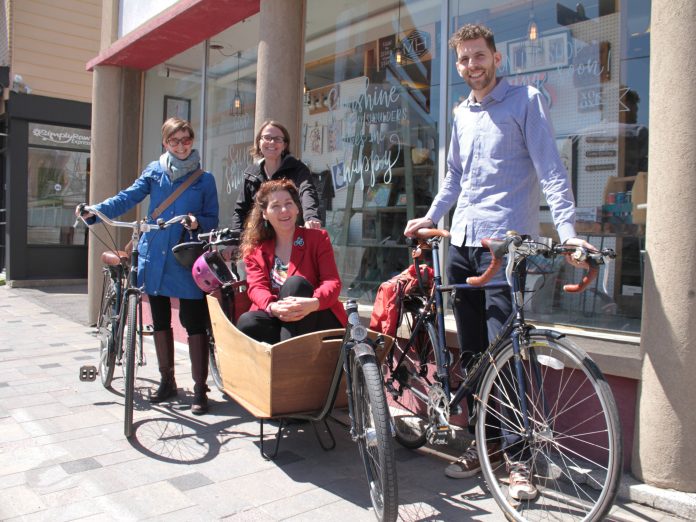By Jacob Hoytema –
Ottawa’s bike scene has transformed in recent years, and more new developments are likely to come — and Kitchissippi is quickly becoming the city’s centre for cycling advocacy and development.
“I would almost call this the beating heart of our campaign, right here in Kitchissippi,” says Judi Varga-Toth, the Executive Director of Canada Bikes, an organization that represents the interests of non-sport cycling nationally. Judi has a second-floor office at the bend where Wellington Street West becomes Somerset Street. In recent months, this corner has become home to an extraordinary concentration of bike-centred businesses and organizations.
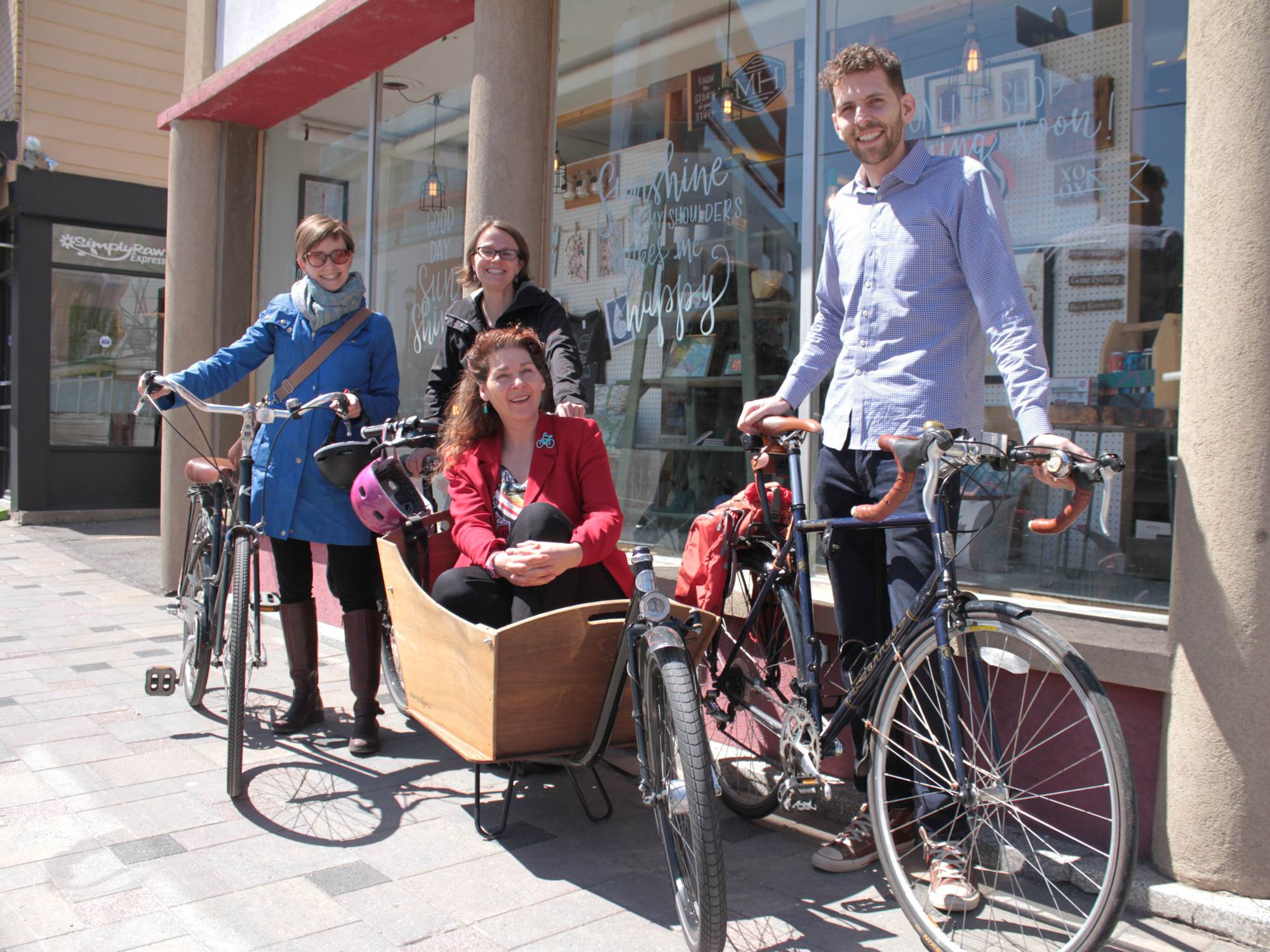
Jamie Stuckless, the Executive Director of Share the Road Cycling Coalition, just moved into the same office space as Judi this April. Her organization advocates for cycling education and policy on the provincial level. Jamie’s cycling knowledge is personal as well as professional: she doesn’t live in Kitchissippi and commutes to work on her bike.

And at handmade furniture store, Maker House Co., founder Gareth Davies uses the showroom as an evening meeting space for Citizens for Safe Cycling, also known as Bike Ottawa. Gareth now serves as President of the board of that organization.
“It’s really exciting to have the local, provincial, and federal cycling advocacy groups within metres of each other,” Gareth says. “It’s a pretty good time to be in Hintonburg for cycling advocacy.”
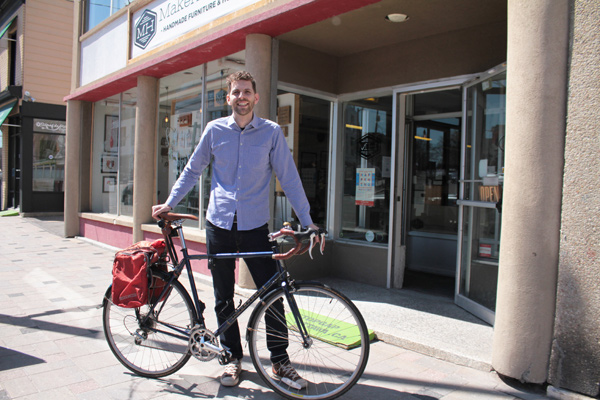
Jamie says that the physical proximity fosters dialogue between the various organizations. “Just having that ability for connection, discussion, brainstorming… it’s definitely a hub for cycling innovation in that way,” she says.
It isn’t only advocacy groups that have settled in the neighbourhood. Kate Whitfield, an engineer with design firm Alta Planning, works next door to Maker House Co. Her work focuses on designing active transportation, or “multimodal” infrastructure — that is, roads and paths that allow for bikes, pedestrians, and cars.
Kate rides a long cargo bike with a large wooden box between the handlebars and the front wheel. She uses the bike to get to work, carry purchases, and even ferry her children around — what she describes as making cycling “part of the every day.”
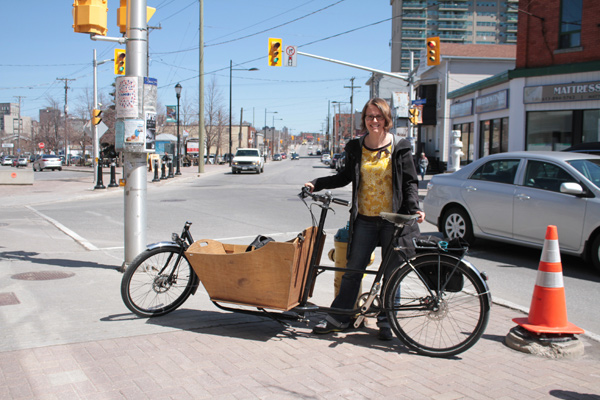
However, while the cycling discussion and development takes place behind doors, neighbourhood bikers still face some challenges. Wellington Street West doesn’t have a separate or protected bike lane, meaning that the many cyclists who travel through the neighbourhood share the road with cars.
“Ironically we do not have good bike infrastructure on Wellington West,” Gareth says, noting that “the bike friendly mentality” wasn’t as dominant during the 2008-2010 reconstruction of Wellington Street West. He does note, however, that the Wellington West BIA has made a “concerted effort” to be more bike friendly in recent years.
Indeed, in a study published earlier this year, the WWBIA found that of all trips beginning and ending in the neighbourhood, 71% are classified as “active transportation” — that is, made by foot or bicycle. That number drops to 31% for trips to Wellington West that originate elsewhere.
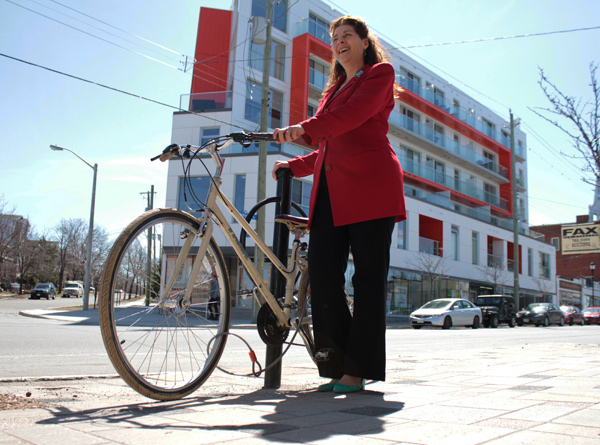
Judi says that encouraging more of this kind of non-automobile traffic is good for the small business environment in the neighbourhood. “Cyclists spend their money here locally, so it’s a huge boost to the local economy as well,” she says. “Cyclists tend to stop in multiple places; they don’t need to search around for parking.”
Being host to these bike-centred businesses and organizations means that Wellington West could emerge as a leader in Ottawa’s development as a cycling city, something that Kate says will only get more important. “It’s a real key part of how we build our cities into our future… we can’t keep relying on just widening roads,” she explains.
“You can see that in the people using it. When you’re out at an intersection and you can be in a lineup of five bikes, that’s your evidence of the change that’s happening.”
